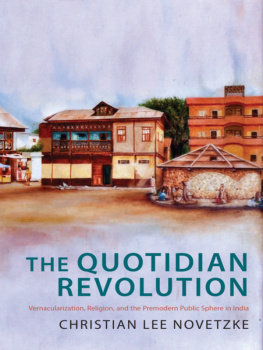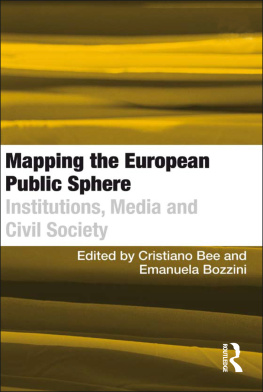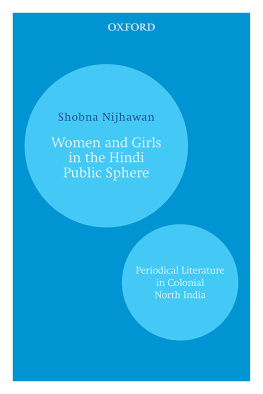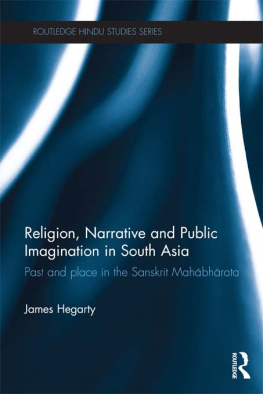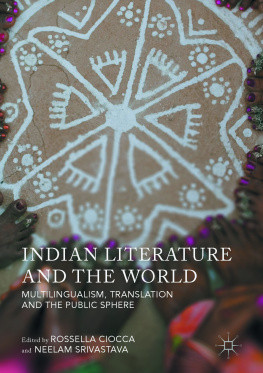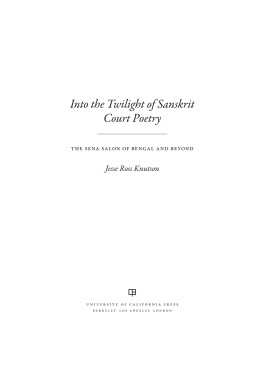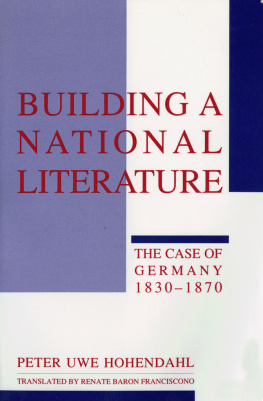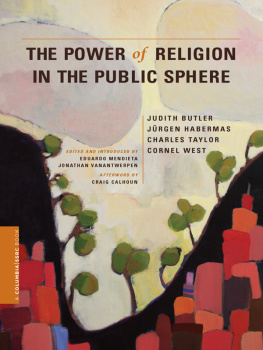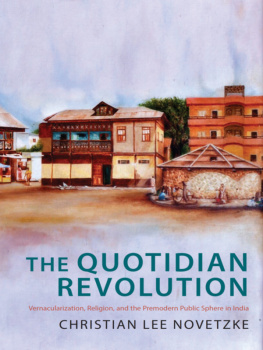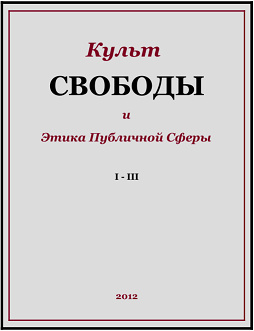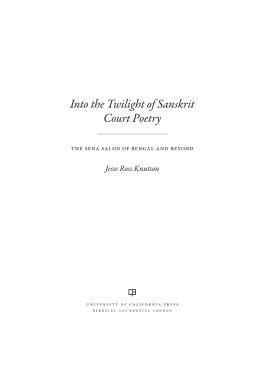Table of Contents
THE QUOTIDIAN REVOLUTION
THE QUOTIDIAN REVOLUTION
Vernacularization, Religion, and the Premodern Public Sphere in India
Christian Lee Novetzke
Columbia University Press
New York
Columbia University Press
Publishers Since 1893
New York Chichester, West Sussex
cup.columbia.edu
Copyright 2016 Columbia University Press
All rights reserved
E-ISBN 978-0-231-54241-8
Library of Congress Cataloging-in-Publication Data
Names: Novetzke, Christian Lee, 1969- author.
Title: The quotidian revolution : vernacularization, religion, and the premodern public sphere in India / Christian Lee Novetzke.
Description: New York : Columbia University Press, 2016. | Includes bibliographical references and index.
Identifiers: LCCN 2016012704| ISBN 9780231175807 (cloth : alk. paper) | ISBN 9780231542418 (e-book)
Subjects: LCSH: Marathi literatureHistory and criticism. | Marathi languageSocial aspectsHistory. | Maharashtra (India)History.
Classification: LCC PK2405 .N68 2016 | DDC 891.4/609dc23
LC record available at https://lccn.loc.gov/2016012704
A Columbia University Press E-book.
CUP would be pleased to hear about your reading experience with this e-book at .
COVER DESIGN: Milenda Nan Ok Lee
COVER PAINTING: Sudhir Waghmare, New Modikhana
To my parents
Mary E. Novetzke
William E. Novetzke
and
In memory of my father-in-law
Sharatkumar Kale (19402013)
Who waited for everyone
Contents
This book is about the moment in recorded history when literary Marathi appeared in medieval India. Situated in Maharashtra of the thirteenth century, the book traces this history by examining Marathi inscriptions and the first two extant texts of Marathi literature, the Lcaritra (c. 1278 CE) and the Jnevar (c. 1290 CE). This study also explores the lives of the two key figures associated with those texts, Chakradhar (c. 1194 [1273 departure from Maharashtra]), who later becomes a key figure of the Varkari religion. The book presents these figures and texts as emblems of the process of vernacularization in Maharashtra, using them to argue that through this process public culture was invested with the idioms of the everyday and the quotidian became valorized in public and political expression. Vernacularization was compelled by a critique of social inequity as a result of this emphasis on ordinary life. This critique of social inequity, and the literary sphere engendered by vernacularization, inaugurated the first trace of a nascent public sphere in the region.
provides a view of what I call the Yadava century, the period presided over by the Yadava dynasty in the region of Maharashtra from 1189 to 1317 CE. The primary textual and archival evidence for these three chapters is the Marathi inscriptional record of the Yadava state, as well as, secondarily, social, cultural, economic, and religious historical evidence that can be gleaned from the Lcaritra and the Jnevar.
, which explores the sociopolitical world of the Yadava century that served as the context for Marathi literary vernacularization. The Yadavas, also called the Sevunas, were a non-Brahmin dynasty that helped stabilize their political territory by creating a clientelist Brahminic ecumene. Select members of that ecumene were awarded land and grants for temples, monasteries, and other institutions, given at the beneficence of the Yadava state as rewards for certain kinds of textual production and other services. The Brahminic ecumene of the Yadava century was primarily composed of Brahmin literary and ritual experts engaging in traditional Brahminic activities, though other high castes, such as Kayasthas and Guravs, also participated. The Yadavas, like many polities of the age, used these gifts of state to create distinct spheres of entitlements throughout their political geography. This nonthreatening, nonmilitarized Brahminic ecumene helped stabilize the political sphere in the Yadava century. As a system it served the political aims of the non-Brahmin Yadava state, displaying a downward flow of power from Kshatriya or King to Brahmin.
uses the inscriptional record left by the Yadavas to counter a common assumption made by historians that Marathi vernacularization was underwritten by Yadava political support. I find no evidence for this widely held claim, but instead show how the inscriptional record and other aspects of the Yadava century suggest that the royal court, while it did not support Marathi literary production with official state funds, did appear to regard Marathi as a language of significant utility in accessing the vast quotidian public that surrounded and populated the Yadava realm. We will see that the indifference to Marathi displayed by the royal court and its Brahminic ecumene allowed greater freedom for new religious communities to adopt Marathi as a means to reach a nonelite population. At the same time, the social value of literacy, a feature of the Brahminic ecumene, led the Brahmin figures at the center of literary vernacularization (Chakradhar, the early Mahanubhavs, Jnandev) to compose a new literature in Marathi.
thus provide a vision of the preconditions of vernacularization in medieval western India.
is configured as a study of the portrayal of vernacularization, the cultural memory of this moment, as preserved in the Lcaritra.
studies the cultural practices of caste and gender that pervaded everyday life in the mid-thirteenth century and were recorded by the early Mahanubhavs in the Lcaritra. If vernacularization directly engaged caste and gender differences at least rhetorically, then attention to these questions of social ethics is vital for understanding the cultural politics at work at the core of a new literary world in Marathi. I show how the early Mahanubhavs grappled with these social issues, both within their community and outside in the ordinary world.
tracks how this rejection of social inequity inspired, or even compelled, the use of Marathi as the medium of communication for the early Mahanubhav community. I give several reasons for the use of Marathi to record the life of Chakradhar in the Lcaritra. In writing a historical text, the early Mahanubhavs wished to preserve the language their founder was remembered to have used, which was Marathi. This was a language understood as feminine and imperfect in the taxonomies of Sanskritic linguistic hierarchy, yet it perfectly suited his audience, especially the female followers whom the early Mahanubhavs wished not to alienate. The choice of Marathi for the preservation of the key text of the Mahanubhav religion was a practical one made around the ethical conviction to leave a text intelligible to the larger quotidian world that did not know Sanskrit. However, Chakradhars ethical urge toward inclusivenessof women, low castes, and those deemed Untouchableled him afoul of the Brahminic elite of the Yadava century, according to the Lcaritra. His story ends with a purported public trial and his own exit from the region of Maharashtra and also from recorded human history.

